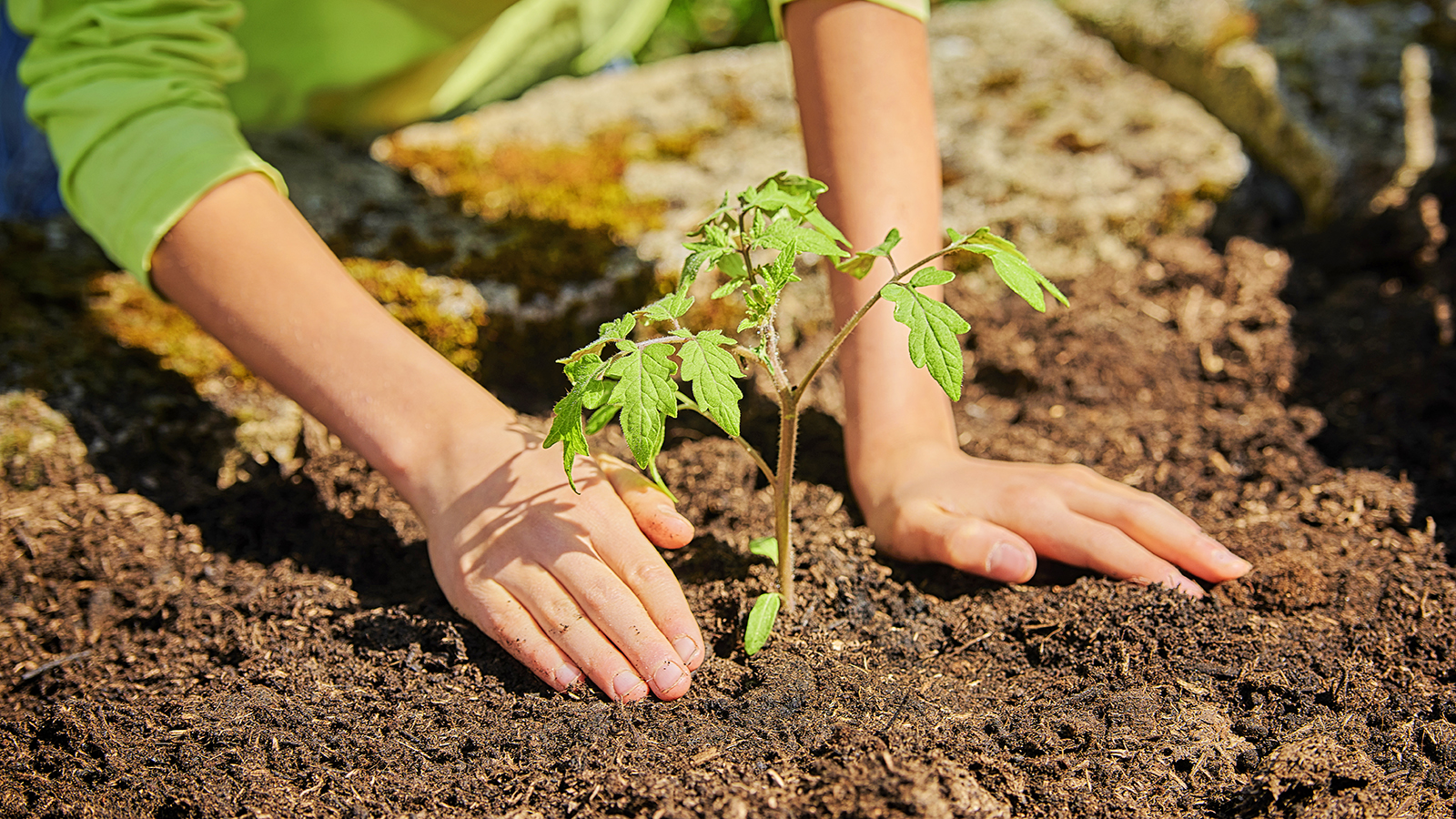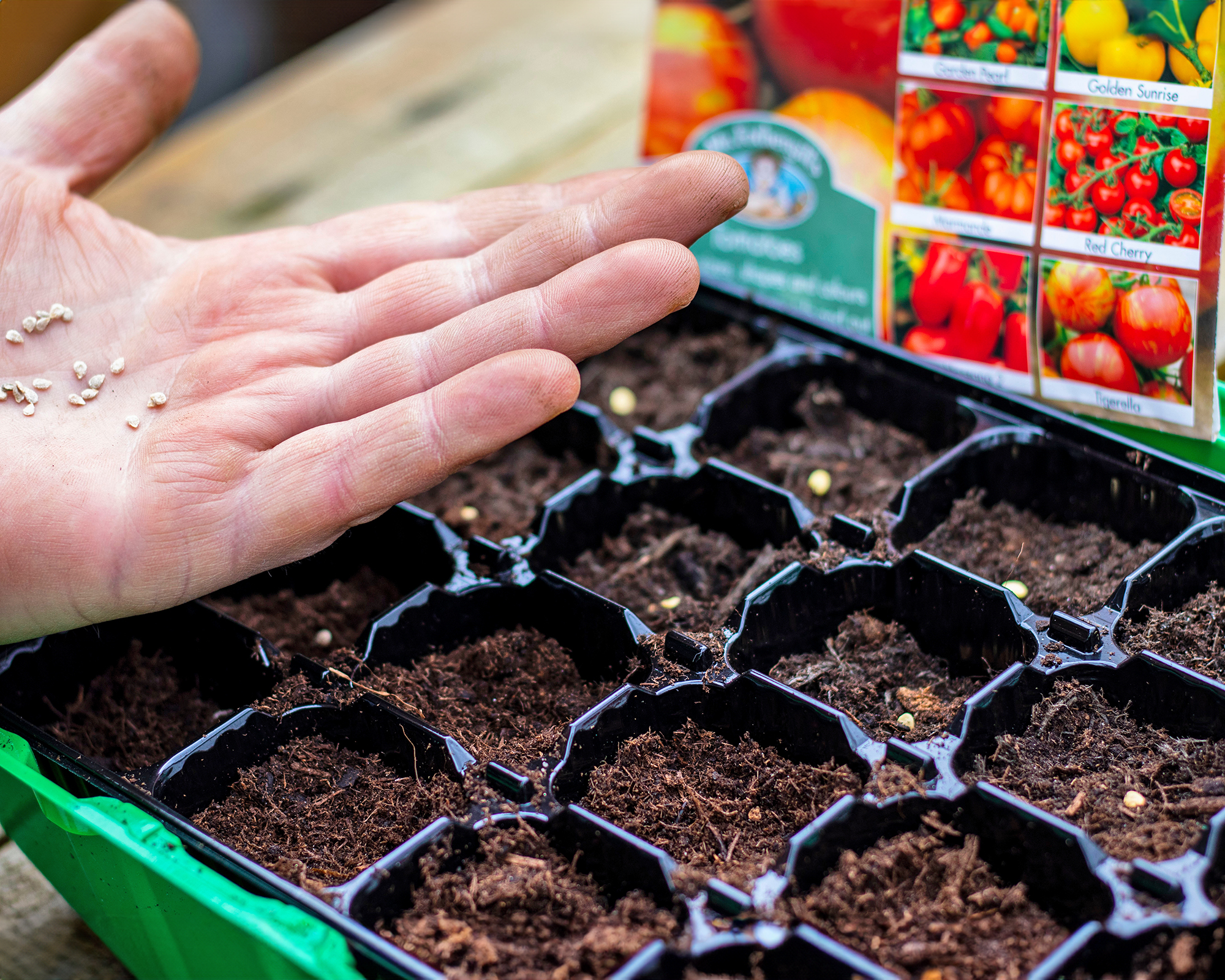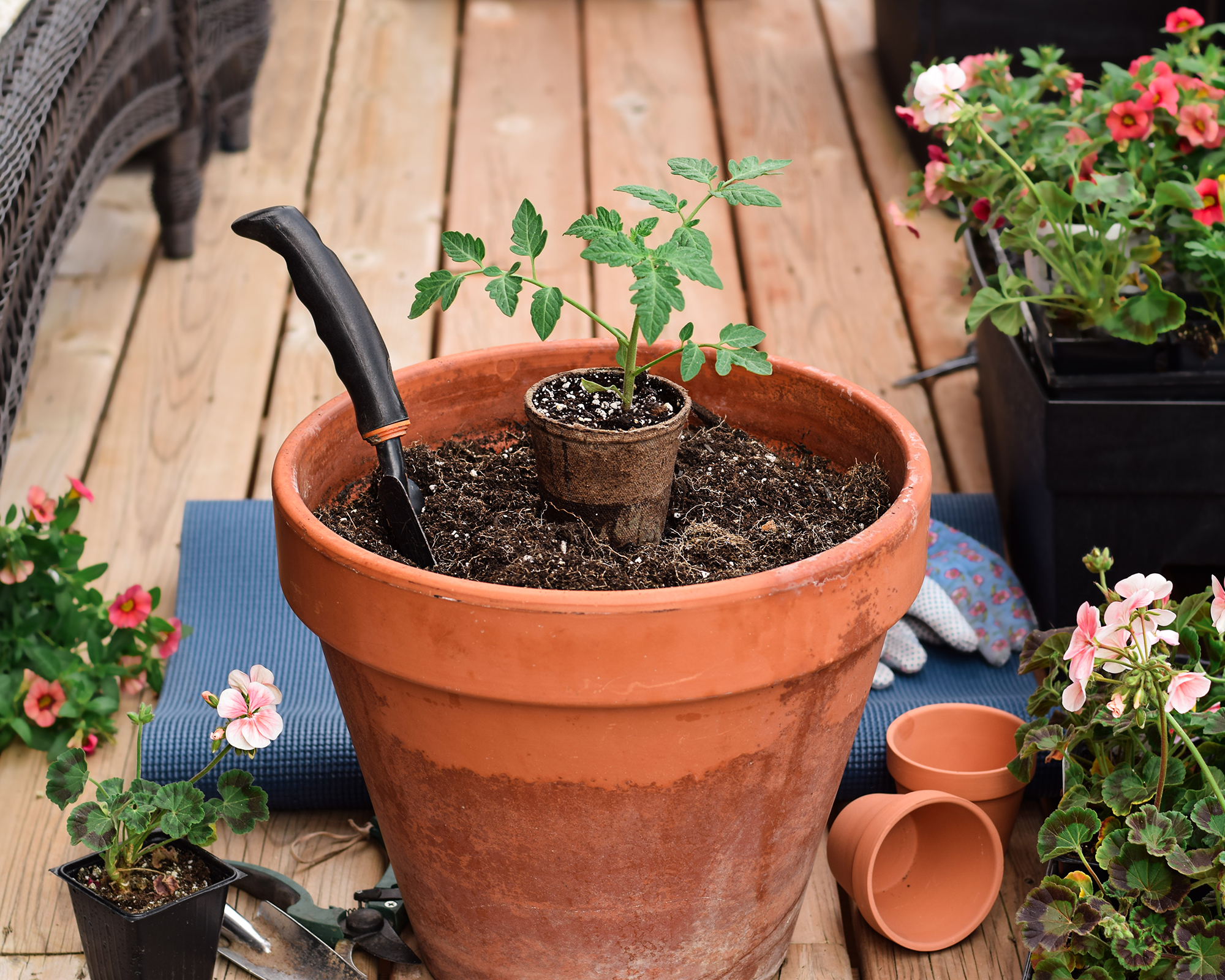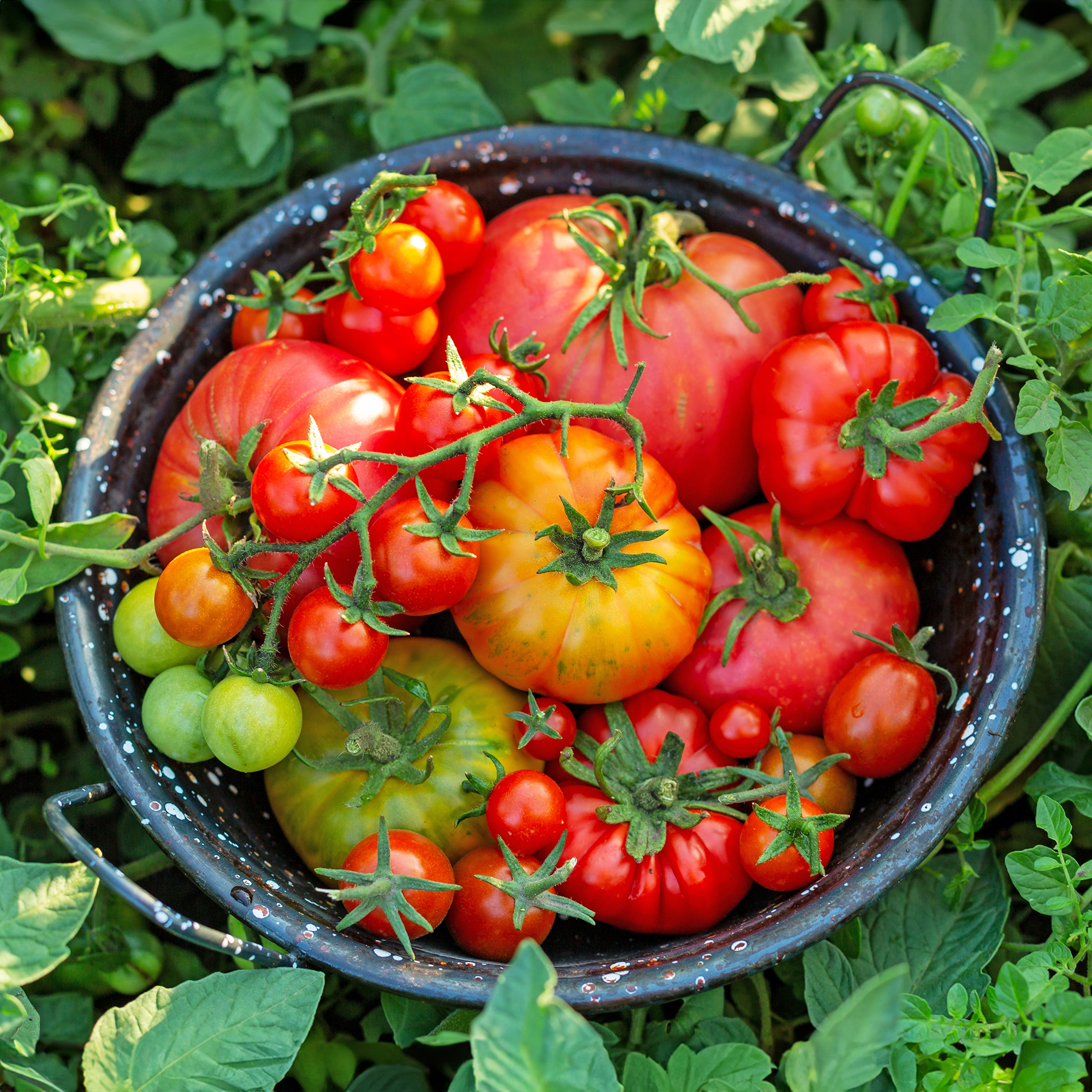When To Plant Tomatoes: The Best Time, Temperature & Size For An Abundant Harvest
Ensure your new tomato plants thrive by planting seeds and seedlings at just the right time. Plus, learn how to check for ideal weather and soil temperatures.

Heather Rhoades

Knowing when to plant tomatoes is the key to a good harvest. These tender, heat-loving plants require warm temperatures and plenty of sunlight; they are susceptible to cold temperatures and frost. While the ideal planting time for tomatoes depends on where you live and your weather conditions, there are a few guidelines to follow.
The first rule of planting tomatoes in your garden is to wait until all danger of frost has passed and air and soil temperatures have warmed sufficiently. If you're learning how to grow tomatoes, then it's vital to understand that planting them too early will not make an earlier-producing tomato. Rather, it exposes the tomato plant to late frosts, which could kill it.
For many gardeners, the ideal time to plant tomatoes is in late spring, but don't rush to get them planted before making some key checks first.

When to Plant Tomato Seeds
While it is tempting after the long, cold winter to plant tomato seeds early in the year, this can be counterproductive. If you start them too early, while the days are still relatively short, the plants will not get enough sunlight, and the result will be leggy seedlings. It is better to wait until the days lengthen and temperatures warm.
Start tomato seeds indoors 6 to 8 weeks before the last frost date for your area. You can find this out by entering your zip code in the Old Farmer's Almanac calendar. You should also be conscious of your USDA hardiness zone. Warmer zones can plant tomatoes earlier in the spring and can often get a second late-season crop of tomatoes planted in July to August. If gardening in a cooler zone, check the number of days to maturity when choosing your tomato variety, to ensure the plant can produce a harvest before the first frosts hit in fall.
While it is a bit safer to start tomato seeds indoors for later transplant, you can also direct sow seeds outside after all danger of frost has passed and air and soil temperatures are a consistent 65 to 75°F (18 to 24°C).
When to Plant Tomato Plants Outside
The first sign that it is the proper planting time for tomatoes is when the nighttime temperature stays consistently above 50°F (10°C). Tomato plants will not set fruit until the nighttime temperature reaches 55°F (13°C), so planting them when the nighttime temperature is 50°F (10°C) will give them enough time to mature a bit before fruiting. Daytime air temperatures should be consistently 65 to 70°F (18 to 21°C). The last predicted frost date must also have passed.
Sign up for the Gardening Know How newsletter today and receive a free copy of our e-book "How to Grow Delicious Tomatoes".
Still, you should monitor the weather for any late-season, sudden frosts, which can kill a tomato plant. If you are in a cooler zone, opt for a later planting time rather than risk damage or death to your plants. Planting the tomatoes in a raised bed, cold frame, or covering them at night can help protect them from a late cold snap.
Ideal Soil Temperature for Planting Tomatoes
Soil temperature is another indicator of readiness. Planting in cold soil can result in generally stunted growth and nutritional deficiencies. Wait to plant tomatoes until soil temperatures have warmed to at least 60°F (16°C) – but ideally 65 to 70°F (18 to 21°C).
A quick and easy way to tell if the soil is warm enough for planting tomato plants is to thrust a finger in the soil. If you cannot keep your finger all the way in the soil for a full minute without feeling uncomfortable, the soil is most likely too cold for planting tomatoes. Of course, a soil thermometer helps too.

When are Tomato Seedlings Ready for Planting?
Tomato seedlings are ready for transplanting when they have grown to 6-10 inches (15-25cm) in height and have two or three pairs of true leaves – i.e. they are "true" to the appearance of the plant's mature leaves. The first two leaves to emerge from the seed are the cotyledons, which are small and oval.
If they were started indoors, you must first harden off seedlings by placing them outside and gradually increasing their exposure to sun, light winds, and cooler temperatures each day for about a week.
Best Time of Day to Plant
Plan to transplant your tomatoes in the late afternoon to early evening when temperatures have dropped and the sun is no longer at its zenith. This will deter shock and give the plants time to acclimate.

When to Plant for Your Area
Tomatoes are warm-season crops that grow in the spring and summer, with fruit production from summer to early fall, depending on the variety and your climate.
In warmer regions, tomatoes can be grown nearly year-round. Try planting tomatoes early in the spring and then again plant a second late-season crop of tomatoes in July to August.
- In the South, tomatoes can be planted in January for an April and May harvest.
- In the mid-Atlantic and similar climes, tomatoes can be planted in the spring for a late spring to early summer harvest.
- In the Pacific Northwest, tomatoes can be planted in late spring and harvested in the summer months.
- In the Northeast and into the Midwest, tomatoes are best planted late spring to early summer and harvested in midsummer through the first fall frost.
Bear in mind some tomato varieties are more cold-hardy than others. The number of days to maturity often listed on the seed packet will guide you as to whether a particular variety is suited for your area.
When is it too Late to Plant Tomatoes?
If time got away from you and now you’re wondering if it's too late to plant tomatoes, all is not lost. Look for early tomato varieties that may be ready for harvest in as little as 52 days (Early Girl) up to 70 days from transplant. Late-season tomatoes are often planted in July and begin fruiting in mid-September. Many of these are heirloom tomatoes that are ready to harvest after 80 days from transplant.
As long as the number of days to maturity is smaller than the number of days until the expected first frost date, you can still plant your tomatoes. Given protection from fall frost, these late-season tomatoes can produce into the early fall.
If you want to extend your tomato growing season, plan to grow your tomatoes either in a greenhouse or use a cloche, cold frame, or row cover to protect the plants from potentially chilly temperatures or frost.
Also, plant indeterminate tomatoes and stagger plantings so you will have a continuous supply of fruiting plants.
More Tomato Growing Inspiration
- Discover 8 perfect flowers to plant with tomatoes to boost yields and banish pests.
- Learn how to grow hydroponic tomatoes for fresh indoor harvests – no soil required.
- What's the difference between determinate vs indeterminate tomatoes? And which should you grow?
- Sign up for the Gardening Know How Newsletter and receive a free copy of our e-book "How to Grow Delicious Tomatoes".

Amy Grant has been gardening for 30 years and writing for 15. A professional chef and caterer, Amy's area of expertise is culinary gardening.
- Heather RhoadesFounder of Gardening Know How
